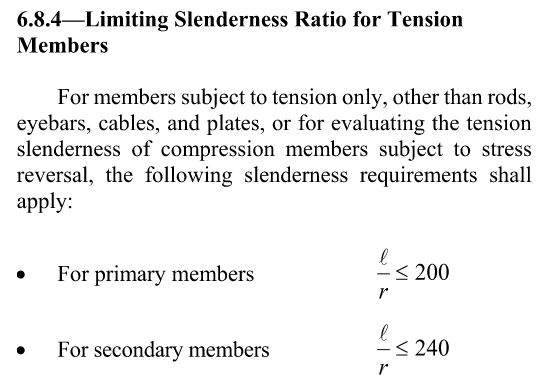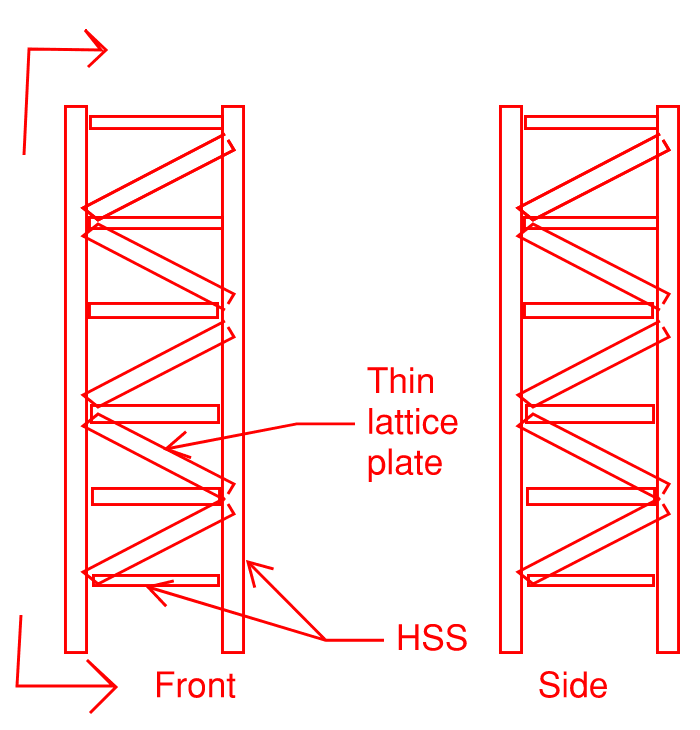BridgeEngineer21
Structural
I have a question about AASHTO 2020 Section 6.8.4, snip below for convenience:

I am designing a temporary tower for support of bridge erection. The tower will be a truss tower consisting of HSS members for the primary longitudinal legs and lateral bracing, and with thin diagonal lattice plates intended to act in tension only for out of plane load stability. Crude sketch below:

In my analysis model I have set the plates to have a compression limit of 0, i.e. they are only active in tension. They pass all design checks since the lateral loads on the tower, and resulting tension on the plates, is relatively small. However, they fail the limiting slenderness ratio check since r in the thin direction is tiny. However, I'm not sure the intent of the first sentence of the AASHTO clause above - does it mean I can just ignore this slenderness limit for plates acting in tension only? Has anyone dealt with this before?

I am designing a temporary tower for support of bridge erection. The tower will be a truss tower consisting of HSS members for the primary longitudinal legs and lateral bracing, and with thin diagonal lattice plates intended to act in tension only for out of plane load stability. Crude sketch below:

In my analysis model I have set the plates to have a compression limit of 0, i.e. they are only active in tension. They pass all design checks since the lateral loads on the tower, and resulting tension on the plates, is relatively small. However, they fail the limiting slenderness ratio check since r in the thin direction is tiny. However, I'm not sure the intent of the first sentence of the AASHTO clause above - does it mean I can just ignore this slenderness limit for plates acting in tension only? Has anyone dealt with this before?
